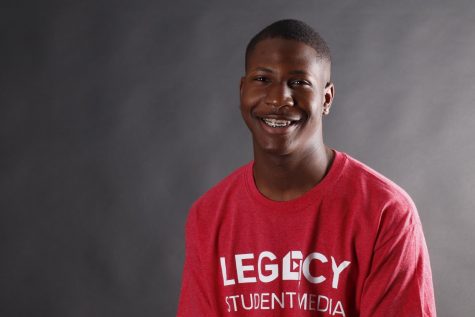As sophomore Chloe Johnson scrolls through her Instagram timeline and taps on “stories”, she’s given the opportunity to learn; to see different people that embody millennial culture. Through this experience, she realizes the importance of learning and becoming receptive.
August 1, 2003: the day MySpace came about. Thousands upon thousands of teens signed up and joined the social media world. Eventually, Facebook, Twitter, Kik, Instagram, Snapchat and Pinterest took their place in millennial culture.
“Ranting to people that I don’t have to see makes it easier,” Johnson said. “I get things off my chest. As teens I feel like we’re restricted to a lot of things, but when we get platforms like Instagram or Twitter it gives us a chance to actually be heard by adults.”
In the midst of political chaos, social turmoil, and personal issues that teens encounter like depression, family problems, and social anxiety, teens like Johnson have found a way to discover safe spots in social media to rant to their followers in a way that they could never do to an adult. Over time, youth have been recognized on apps like Vine and YouTube. For example, King Bach, known for his hilarious six-second videos, The Fine Bros. and their informative clips, and Shane Dawson, YouTuber, all gave teens a reason to smile, laugh, or even cry. They make teens consider topics that they wouldn’t normally reflect on, such as what they want to make out of their lives, depression, mental health, and body image. Festivals like VidCon center their brand around millennials. Ms. Rebecca Lopez, WFAA news reporter, thinks teens have more opportunities to share their thoughts than she did as a child.

“I’ve seen a lot of children speaking up and doing good things in the world and I love those kinds of stories,” Ms. Lopez said. “Teens have more of a voice now. You can just have your own Youtube channel and be heard.”
Throughout history, teens have been forced to conform to social standards that they’ll never meet. Schools have limited students’ worth to small numbers (GPA) or expect kids to take interests in jobs that require them to see money instead of what makes them satisfied. Parents become like robots trying to force their kids to become what they want them to be. Youth carry a similar spirit from generation to generation; the essence of resilience, not rebellion. There are many examples of the strong-headed nature of youth: from peaceful protests on International Women’s Day in 2017 to teenage girls standing in front of the Texas Capitol in objection against the sanctuary for an illegal immigrants ban. DeVante Tidwell, Youth Coordinator for Potter’s House of Dallas, couldn’t agree more.
“Youth today can express themselves with the accessibility of the various outlets {social media},” Tidwell said. “Wisdom has nothing to do with age. It’s a gift coupled with knowledge.”
Heat exchanging from close proximity, sweat dripping from their drenched clothes, and clammy hands coupled with another’s brought in an era of togetherness. People of all colors were seen dancing with one another. In the 1930’s, teens across the nation fell in love with a new genre of jazz: Swing. Kids began hosting their own dances on the weekends. Soon enough, adults got involved in the culture. These acts of spontaneity and influence demonstrate how millennial’s voices echo in the void of indifference and uncertainty. Throughout history, teens have emulated this behavior. It’s not that teens are the most intelligent beings on Earth, or the most focused, but it’s their common shared morale that sets them apart and changes their culture.
“I feel like for some teens we know we’re influential, which is why we speak on issues on social media,” Johnson said. “But for all teens {knowing their influence}, we would be finally heard. We would make more of an impact.”
We live in a world where people go through the same cycle of life: school, work, marriage, and watch our children do the same. As we get older, we limit our innate creativity, painting the walls of our once vibrant minds black and gray. That’s something that teens are trained to do. 84 percent of kindergartners rank higher in creativity than kids in second grade who rank 10 percent in creativity simply because they draw, write, and color based off of their own experiences. Over time, we lose our ability to express ourselves and project our ideas. Mr. Tom Crandall, youth pastor of Bethel Church, believes that teens have the power to choose to acknowledge their voice.
“I think freedom looks like the ability to look at options in front of you,” Mr. Crandall said. “And you have the power to make a choice for yourself that’s independent of worldly influences.”
Understanding, empathizing and relating toward youth enable their voices to create change. Social outlets allow them to learn to take control of their individuality. Breaking casts of familiarity enables them to take weights off their shoulders, step out of depression, and to realize that anxiety can be shrugged off with more faith and less thought. Normally, teens across America would have to wait for adults to make the first step for acknowledging social issues, but now, millennials are taking control.
“They could come up with solutions in a creative and influential way that speaks the same language of the people they want to impact,” Tidwell said. “Sometimes teens need a voice.”




